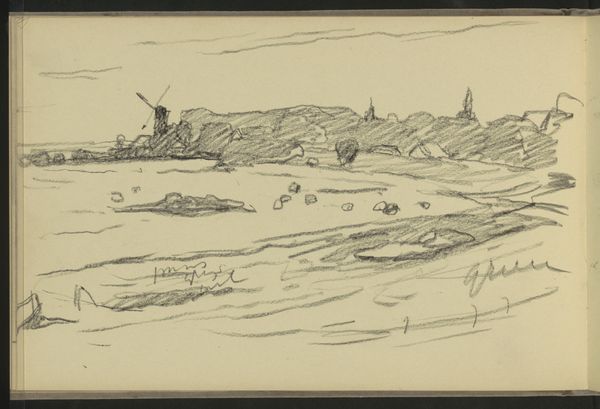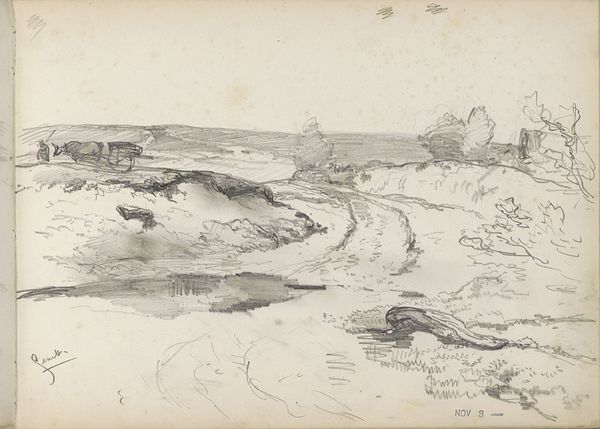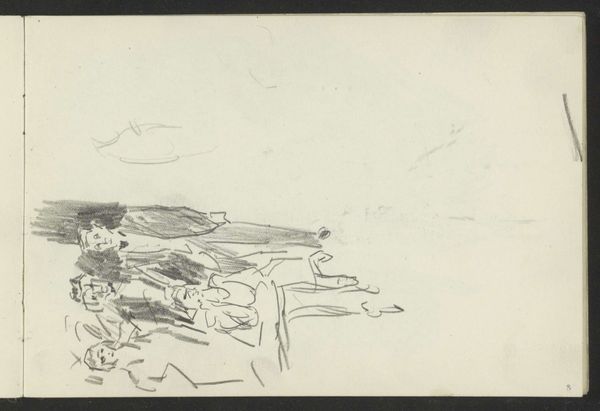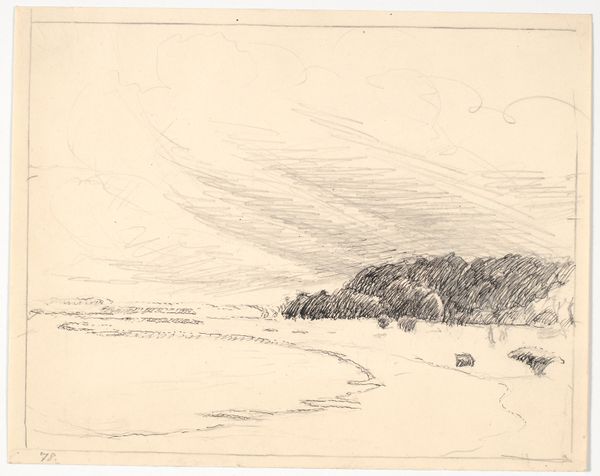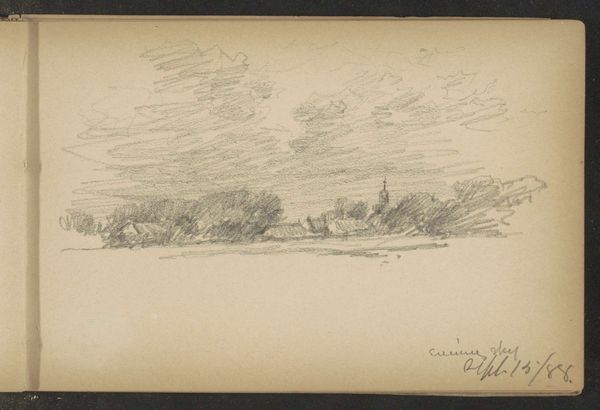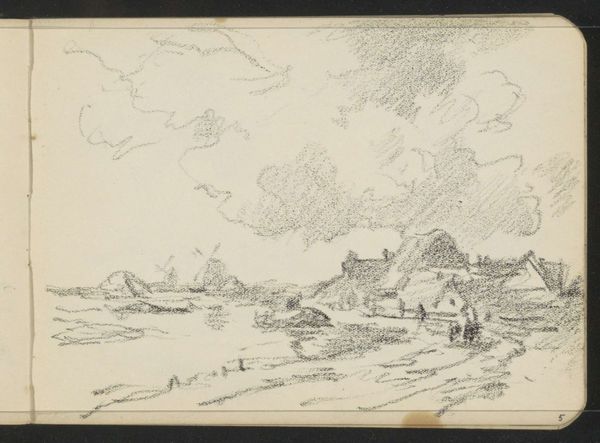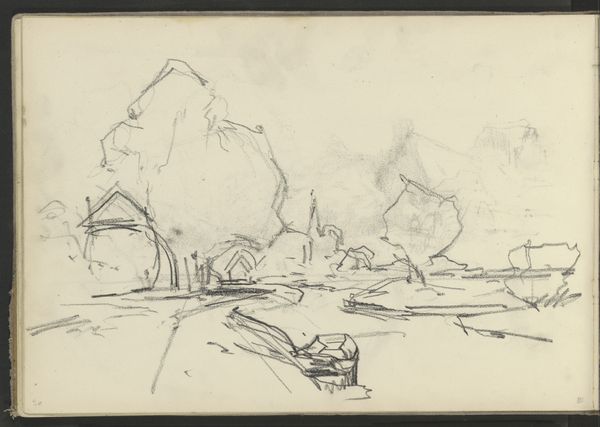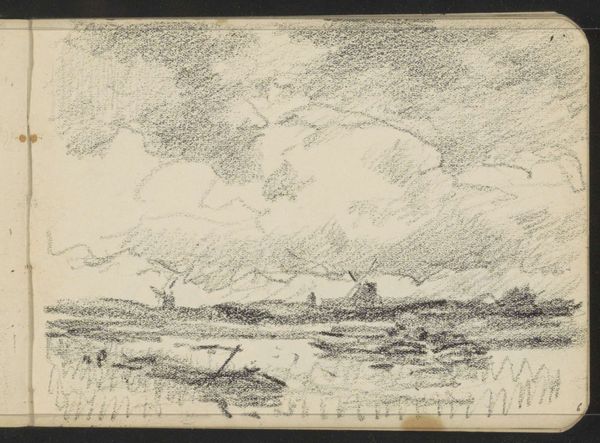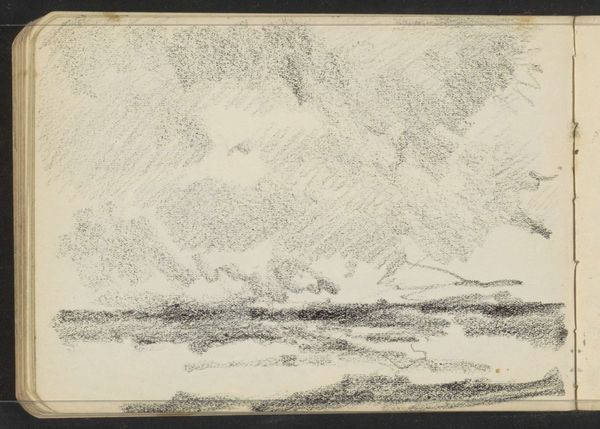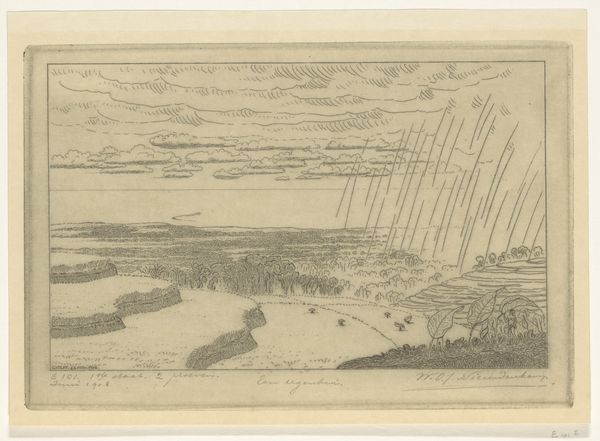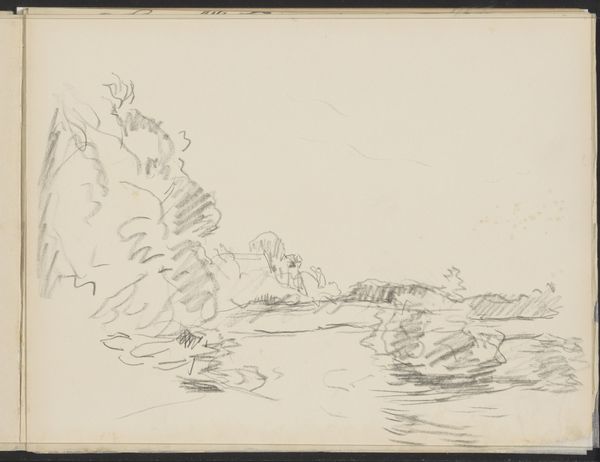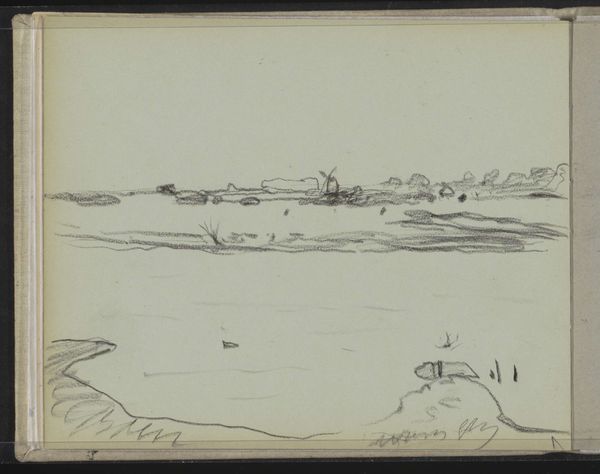
#
amateur sketch
#
toned paper
#
light pencil work
#
pencil sketch
#
sketch book
#
incomplete sketchy
#
personal sketchbook
#
pen-ink sketch
#
sketchbook drawing
#
sketchbook art
Copyright: Rijks Museum: Open Domain
Curator: Immediately, there's a delicate balance between lightness and shadow in this drawing, a sense of transience. It feels unfinished, a mere glimpse captured on paper. Editor: We're looking at "Heuvellandschap," or "Hills Landscape," a pencil sketch on toned paper by Willem Bastiaan Tholen. It was created sometime between 1885 and 1931, and now resides here at the Rijksmuseum. It's quite small, looks to be from a personal sketchbook. Curator: That makes sense, given the immediacy of it. I'm drawn to the loose, almost frantic, lines that suggest movement and texture, especially in the foreground. It reads as a hurried study, maybe capturing a fleeting moment of inspiration. This urgency begs the question: What drew Tholen to this particular landscape? Was it political, economic? Editor: While Tholen is generally associated with the Hague School and known for more polished landscapes, these sketches give us a unique insight into his artistic process and the influences of landscape on artists during a time of expanding industrialization. One wonders if these images held other social and philosophical underpinnings that we would see in similar works from the Barbizon School for example. Curator: Precisely. And in that context, the "unfinishedness" becomes more significant. Is it resistance, a rejection of the pressures of a complete, commercial piece? How can we tie the amateur and personal artistic practice into a political moment, thinking through questions of labour, production, and display. Editor: It's a wonderful entry point for understanding art history beyond the finished product. Consider the sketchbook's function within an artist's life: it’s not just for planning but for personal expression outside the dominant norms, shaping their career's social capital, while often excluding specific cultural values. Curator: Absolutely, the sketchbook as a safe space. A location, a historical and emotional space for free play, and thinking through intersectional narratives. Editor: The next time you’re creating work in your studio or home, think about this sketch, this artistic approach. And let’s ask ourselves how does that compare or reflect current power structures in the art industry.
Comments
No comments
Be the first to comment and join the conversation on the ultimate creative platform.
